What sound does the heart make?
Lubb-Dupp
Carries blood away from the heart to the cells.
Artery
These are the upper chambers of the heart
Atria
What is 9 & 10?
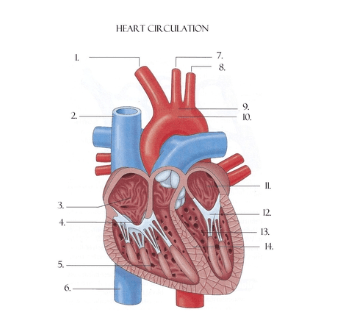
Aorta
Occurs when the blood vessels become stiff due to harding of the arteries.
Arteriosclerosis
Is Diastole (Dupp sound) at rest or contraction?
At rest
Largest artery in the body.
Aorta
These are the lower chambers of the heart
Ventricle
What is 3?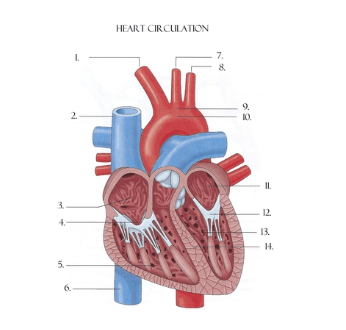
Right Atrium
This is the name for the substance that blocks the vessels in arteriosclerosis.
Plaque
What is the encasing called that the heart is in?
Pericardium
Thin, contain one-way valves, spongy feeling
Veins
This separates the left and right side so blood does not mix.
Septum
What is 13?
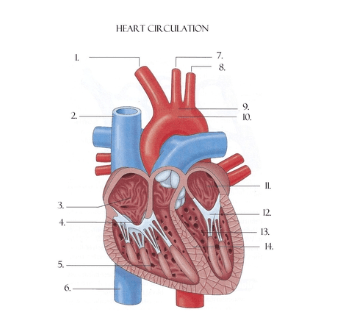
Left Ventricle
Congestive Heart Failure (CHF) has several signs and symptoms. Name 3.
Shortness of Breath
Edema
Weakness/Fatigue
Rapid/Irregular HR
Cough
Abdominal Swelling
Rapid weight gain
Chest Pain
List the three layers in the wall of the heart in order from superficial to deep.
Epicardium
Myocardium
Endocardium
This artery carries blood to the lungs.
Pulmonary Artery
Tricuspid Valve
What is 12?
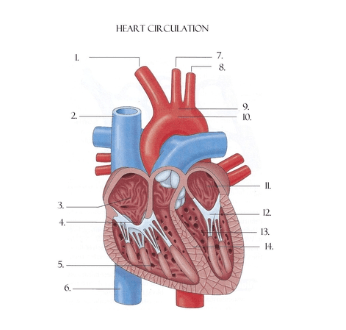
Bicuspid/Mitral Valve
This occurs when the blood flow to a part of the heart is blocked. It is characterized by chest pain/pressure/tightness, nausea, shortness of breath, fatigue, dizziness, etc.
(layman's term not accepted)
Myocardial Infarction (MI)
The heart pumps how many liters of blood per day? *NOT how much blood is in your body total*
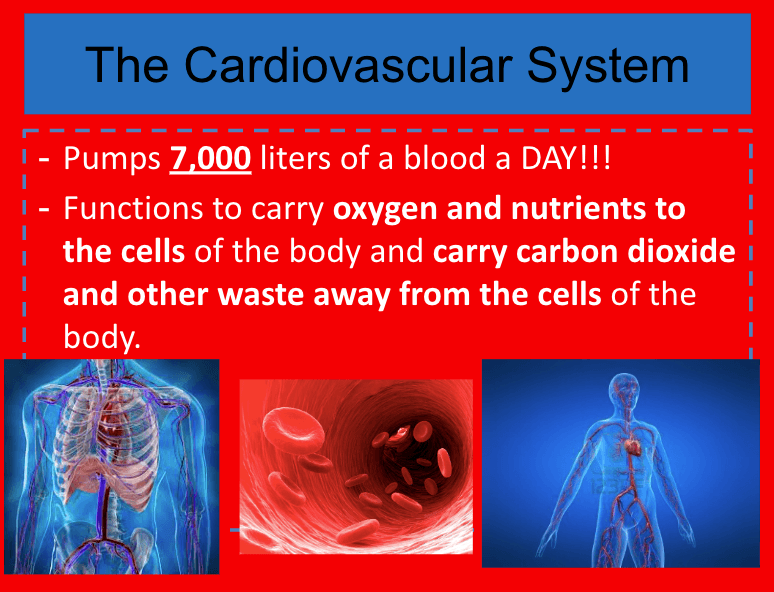
This vessel has a superior and inferior part
Vena Cava
This is the valve located between the left atrium and ventricle
Bicuspid/Mitral
Label 1-14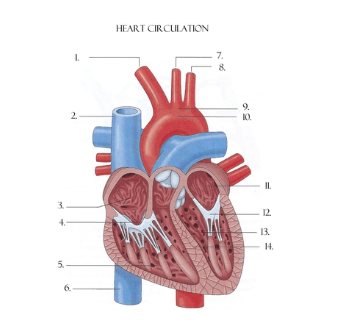
1
2
3
4
5
6
7
8
9
10
11
12
13
14
This is a procedure used to treat Myocardial Infarctions. It involves going into the affected area and possibly placing a stent or inflating a balloon.
Cardiac Catheterization